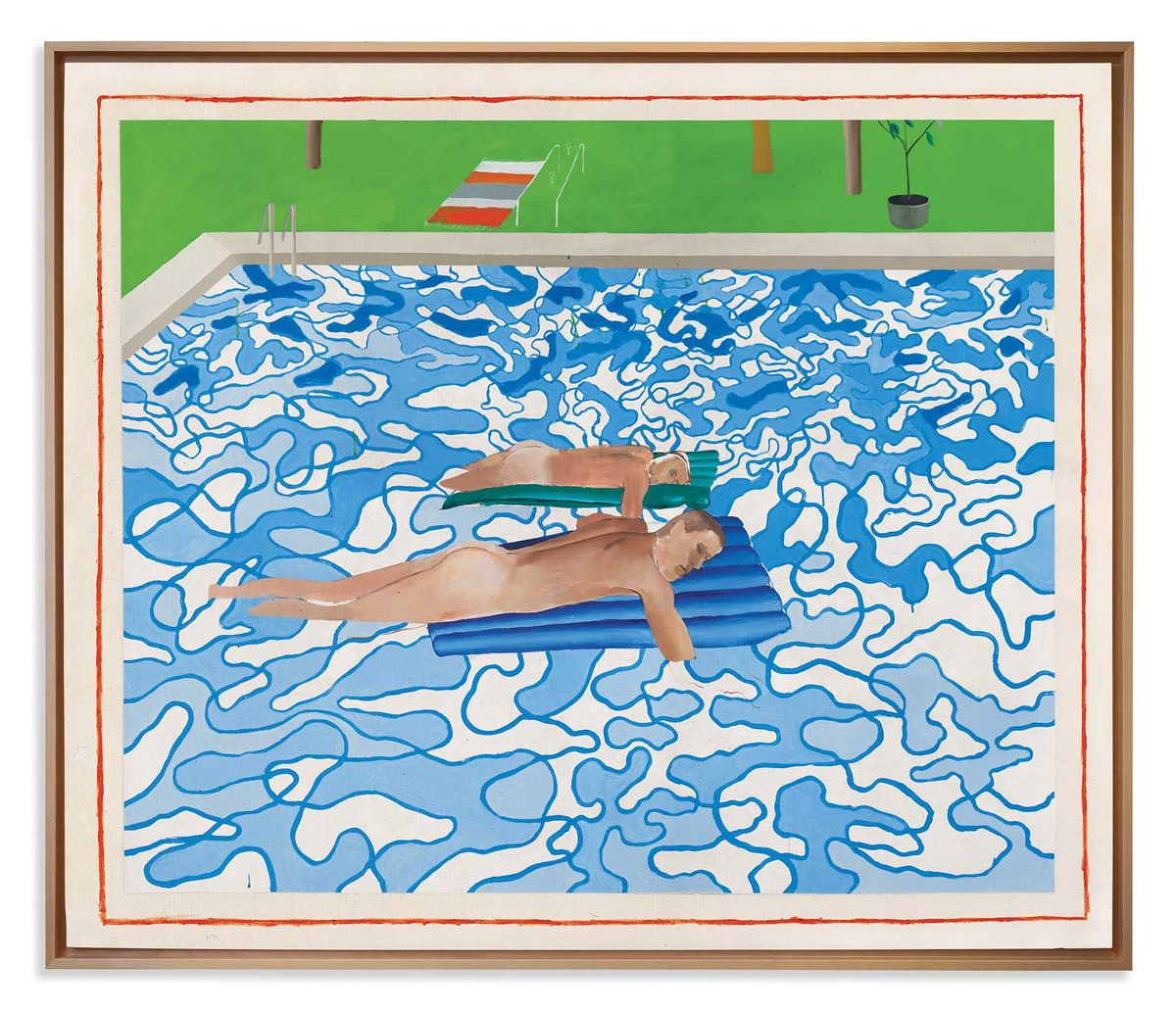London’s March evening sales will mark the first major test of the new auction year after a disappointing 2023. But with multiple geopolitical conflicts raging, interest rates remaining high and the trade itself in a state of flux, expectations seem to be balancing cautiousness with calm.
The cycle kicks off with Sotheby’s Modern and contemporary evening sale on 6 March, followed the next night by Christie’s auctions of 20th/21st-century and Surrealist art, as well as Phillips’s 20th-century and contemporary offering.
Although most details were still under wraps when The Art Newspaper went to press, select headline lots had begun emerging. Christie’s20th/21st-century evening sale will feature California (1965), an early David Hockney swimming pool scene last shown in public more than 40 years ago; the house expects it to fetch around £16m. Sotheby’s plans to offer the first Blue Period Picasso to hit the market since 2010; the 1904 portrait Lluís Vilaró (1904, see p42) carries an estimate of £5m to £7m in its Modern and contemporary evening sale.
Market players will want more than a few strong headliners to feel reassured, given the largely underwhelming results in London last spring and autumn. According to an Artsy report, worldwide auction sales of blue-chip works declined significantly last March, with only 82 lots making $1m or more, compared with 157 in March 2022. Similarly, observers sat in London’s salerooms last October saw many works justify sensible estimate ranges but few achieve the speculative thrill once synonymous with Frieze Week auctions.
There’s a wider sense that we’ve lost the formula for how to predict patterns
“There’s no question we’re in a soft market, but there’s a sense of everyone being proactive and really using platforms, notably fairs, to keep driving sales forward,” says Tanya Baxter, a London- and Hong Kong-based adviser and dealer in Modern and contemporary art.
While Baxter cites Modern British art as a recent bright spot, contemporary and ultra-contemporary women artists are also consistently inciting competition. Sotheby’s hopes to meet this demand with works by Jadé Fadojutimi, Julie Mehretu, Emma Webster, Rebecca Warren and Sarah Lucas this March. Phillips, meanwhile, is offering Cecily Brown’s Luck Just Kissed You Hello (2013) with a £1.5m to £2m estimate.
Christie’s plans to extend its strong track record of making healthy prices for work by female Surrealist artists, with Remedios Varo’s 1961 painting Niño y mariposa (Niño triste) (boy and butterfly [sad boy]) expected to sell for £1.2m to £1.8m, and Hannah Höch’s 1920 collage Das schöne Mädchen (the beautiful girl), estimated to make £120,000 to £180,000.
A shifting landscape
Sotheby’s revamped fee structure, with buyers’ premiums being lowered across price tiers as of May, is heightening speculation about the market’s response to the ongoing uncertainty. The collector Sylvain Levy says the auction house’s recently concluded trial with Russian-born billionaire Dmitry Rybolovlev has shined “a new light on how the auction houses and the dealers are pricing”, and that he “[does] not think that it will increase confidence”.
“There’s a wider sense that we’ve lost the formula for how to predict patterns in the market,” says Caroline Sayan, the chief executive of the international advisory Cadell. Although collectors still have the requisite money and interest, she adds, “selling entities are struggling to work out their buyer base, and those that built this market are retiring from it. The question is, did they build a decent succession plan?”
Auction houses are voicing confidence about the generational shift. Tessa Lord, Christie’s director and senior specialist for post-war and contemporary art in London, points to a 22% increase in Millennial buyers across the house’s 20th- and 21st-century art sales last year, with 13% of all bidders and buyers being new to Christie’s.
Drew Watson, the head of art services at Bank of America, sees “another sign of a maturing industry” in the “fair amount of consolidation among auction houses, galleries and art fairs”. He adds that the middle market “with its larger base of participants has been more buoyant” than the high end of late.
So, most expectations are measured. But after the 2008 recession, Brexit and a global pandemic, the market seems to trust it can ride out a storm.


